Aquatic Invertebrates
Media
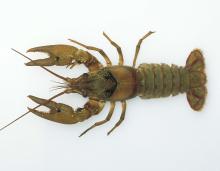
Species Types
Scientific Name
About 38 species in Missouri
Description
Crayfish are freshwater aquatic invertebrates that look a lot like small lobsters, to which they are related. There are about 38 species of crayfish in Missouri.
Media
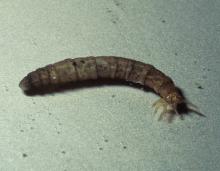
Species Types
Scientific Name
There are over 500 species of crane flies in North America.
Description
Crane fly larvae are tan or gray grubs that live in aquatic habitats or in moist places on the ground. The harmless adults resemble huge mosquitoes.
Media
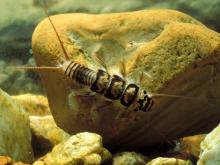
Species Types
Scientific Name
There are hundreds of species in North America
Description
Stonefly larvae are aquatic and somewhat resemble the larvae of mayflies and damselflies. Their presence usually indicates good water quality.
Media
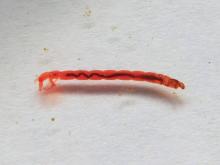
Species Types
Scientific Name
Nearly 1,100 species in North America
Description
Midge larvae look something like thin aquatic inchworms. They can be clear, whitish, olive, tan, or bright red. They occur in a variety of aquatic habitats. As adults, they resemble mosquitoes but they never bite.
Media
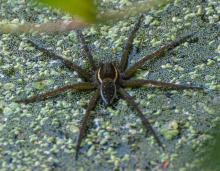
Species Types
Scientific Name
Dolomedes spp., Tetragnatha spp., and others
Description
A variety of spiders are adapted for live on and around water. Many of these are called fishing spiders. Several have the ability to run across the water’s surface. Some build webs, others do not.
Media

Species Types
Scientific Name
Dugesia, Planaria, and other genera
Description
Unlike their parasitic cousins in the flatworm group, turbellarians, or planarians, are tiny carnivores or detritus-eaters that glide smoothly across submerged leaves and other objects.
Media
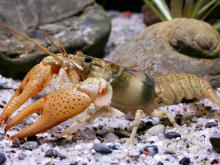
Species Types
Scientific Name
Faxonius ozarkae (formerly Orconectes ozarkae)
Description
The Ozark crayfish is light brown to reddish brown with numerous black specks on the pincers and often on the abdomen as well. The pincers are broad and powerful. It lives in the White and Black stream systems.
Media
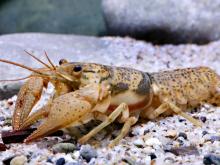
Species Types
Scientific Name
Faxonius peruncus (formerly Orconectes peruncus)
Description
The Big Creek crayfish is moderately small and brown. It has a very localized distribution centered in Big Creek and its tributaries, in the St. Francis River basin. It lacks bright colors, but blackish specks and blotches occur over the top surfaces of the body and pincers.
Media

Species Types
Scientific Name
Lacunicambarus aff. diogenes (syn. Cambarus diogenes)
Description
The powerfully built devil crayfish is usually a uniform olive or tan, without obvious blotches or spots. It digs underground burrows, often with mud chimneys, and has a wide distribution.
Media

Species Types
Scientific Name
Faxonius harrisonii (formerly Orconectes harrisonii)
Description
The belted crayfish is medium-small, tan, with a distinctive pattern of alternating olive-green and reddish-brown bands on the abdominal segments. It is found only in the Big River and its tributaries.
See Also
About Aquatic Invertebrates in Missouri
Missouri's streams, lakes, and other aquatic habitats hold thousands of kinds of invertebrates — worms, freshwater mussels, snails, crayfish, insects, and other animals without backbones. These creatures are vital links in the aquatic food chain, and their presence and numbers tell us a lot about water quality.





















